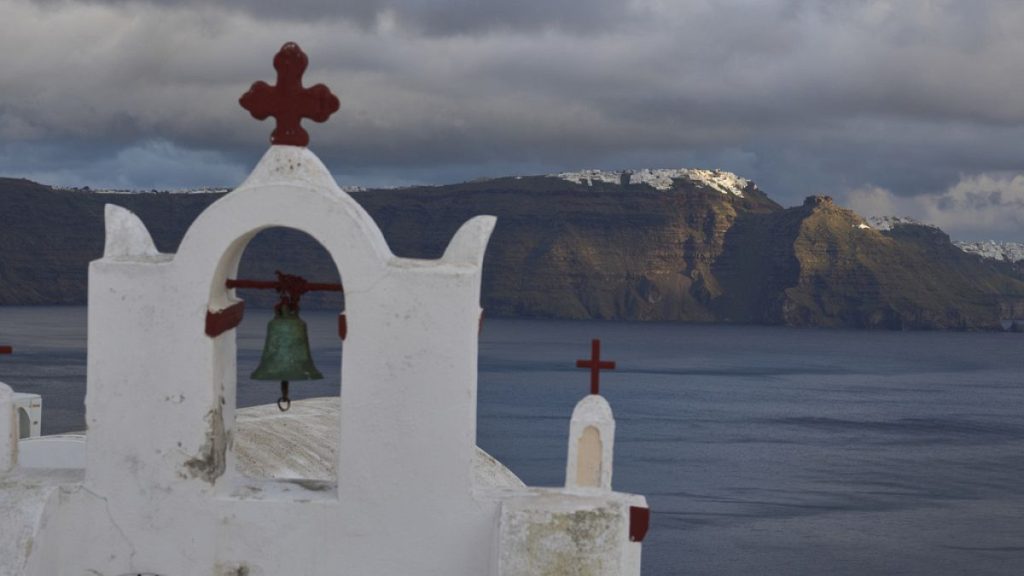Misleading Videos Fuel False Alarms on Santorini
In recent months, Santorini, the picturesque Greek island known for its stunning landscapes and azure-domed churches, has faced an unexpected and distressing challenge. False, viral videos purporting to show the island engulfed in lava have been circulating widely on social media platforms such as TikTok and X (formerly known as Twitter). These videos have garnered thousands of views, shares, and likes, along with a barrage of comments. While many viewers have sensibly questioned the authenticity of these clips, a worrying number have taken them at face value, leading to widespread panic and misinformation.
The Spectacle of AI-Generated and Miscaptioned Videos
One particularly alarming video depicts a stream of lava cascading down the cliffside into the sea, with volcanoes erupting across the mountains. Another shows crowds fleeing in terror as fires rage against the backdrop of Santorini’s iconic white buildings and blue roofs. A third video features smoke billowing from an island, purportedly Santorini, as if a catastrophic eruption had just occurred. However, upon closer inspection, it becomes evident that the first two videos are AI-generated. In the lava video, the sea appears artificial, and its interaction with the rocks and lava lacks realism. The colors are overly saturated, and anomalies such as a boat sail blending into buildings and another boat seemingly covered in lava are telltale signs of AI manipulation. In the second video, the running figures are distorted, with faces blurring and blending into one another, further betraying the AI origin.
The Real Santorini: Geographic and Visual Clues
The third video, while not AI-generated, is equally misleading. It does not depict Santorini at all. The iconic blue-roofed buildings and the distinctive geography of the island are absent. A reverse image search reveals that the video actually shows Whakaari, or White Island, in New Zealand. Whakaari is New Zealand’s most active cone volcano and last erupted in December 2019. This misattribution further underscores the ease with which misinformation can spread and the importance of verifying sources.
The Consequences of False Claims
Claims have also circulated, though without any evidence, that Turkey is behind the false videos in an effort to harm Santorini’s tourism industry. The Turkish Ministry of Culture and Tourism has not responded to requests for comment from EuroVerify, leaving the veracity of these claims in question. Such baseless accusations not only fuel unnecessary tension between nations but also distract from the real issues at hand.
The Real State of Emergency on Santorini
While the false videos have caused alarm, Santorini is indeed facing a real and pressing challenge. The island has experienced over 800 tremors with a magnitude of three and above since the end of January, leading to the declaration of a state of emergency that will remain in place until early March. The strongest tremor, measuring 5.2 on the Richter scale, occurred on February 5 and was felt as far away as Athens, Crete, and parts of Turkey. Despite causing minimal damage thus far, the tremors have driven thousands to evacuate Santorini and the nearby islands of Amorgos, Anafi, and Ios, following the recording of over 200 undersea earthquakes in the area.
Government Response and Expert Insights
Prime Minister Kyriakos Mitsotakis has responded to the crisis by announcing a €3 million funding package to construct an emergency evacuation route in Santorini’s south. This move underscores the government’s commitment to ensuring the safety and well-being of the island’s residents and visitors. Experts consulted by Euronews Travel have noted that the recent quakes are not linked to Santorini’s volcano but have yet to determine whether the earthquake swarm could lead to a more powerful earthquake. The situation remains under close surveillance, with authorities and scientists working diligently to provide accurate information and reassurance to the public.












